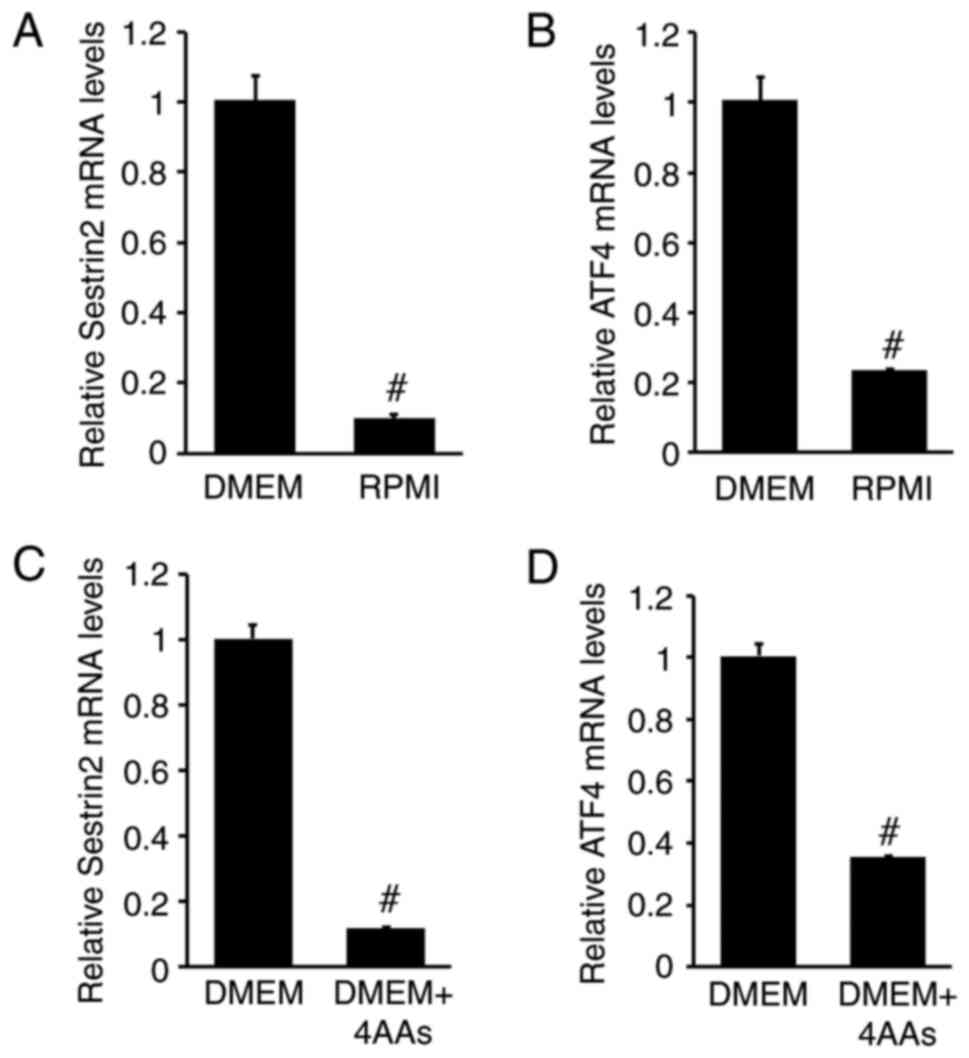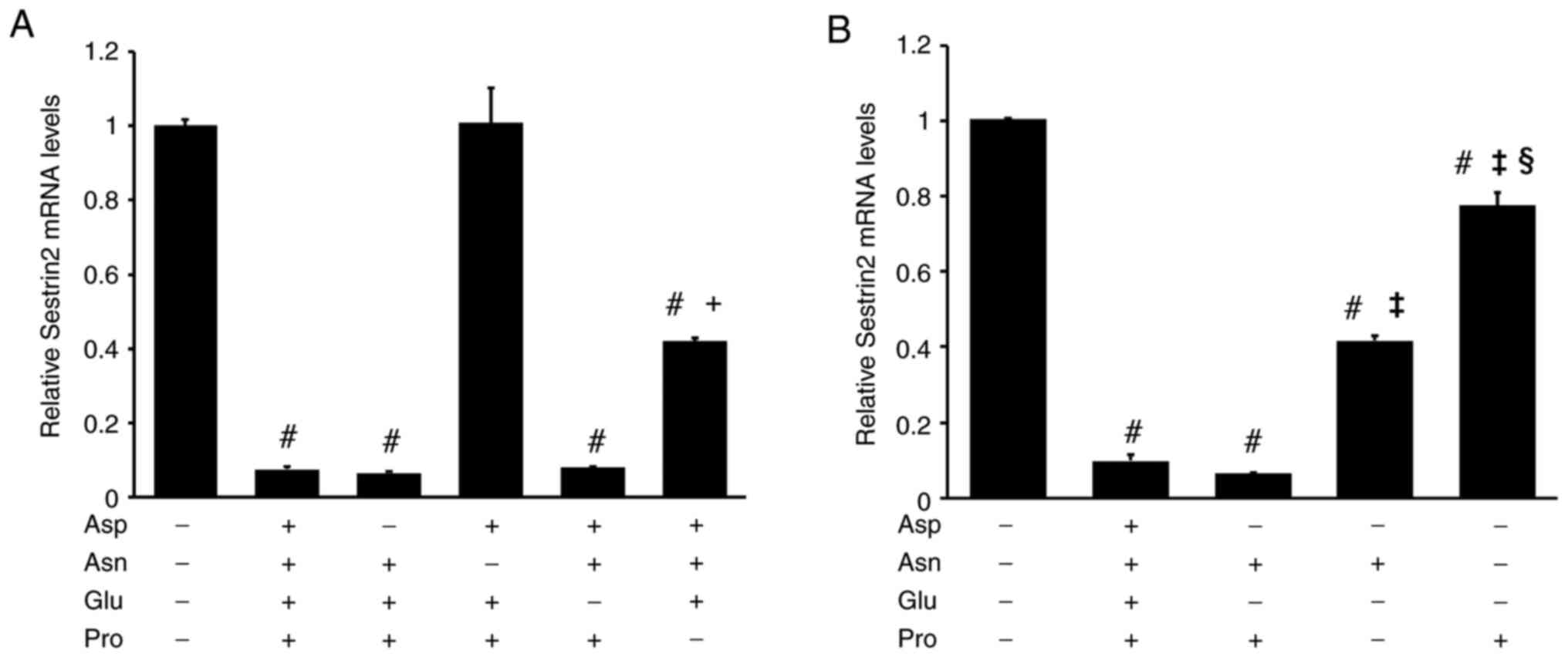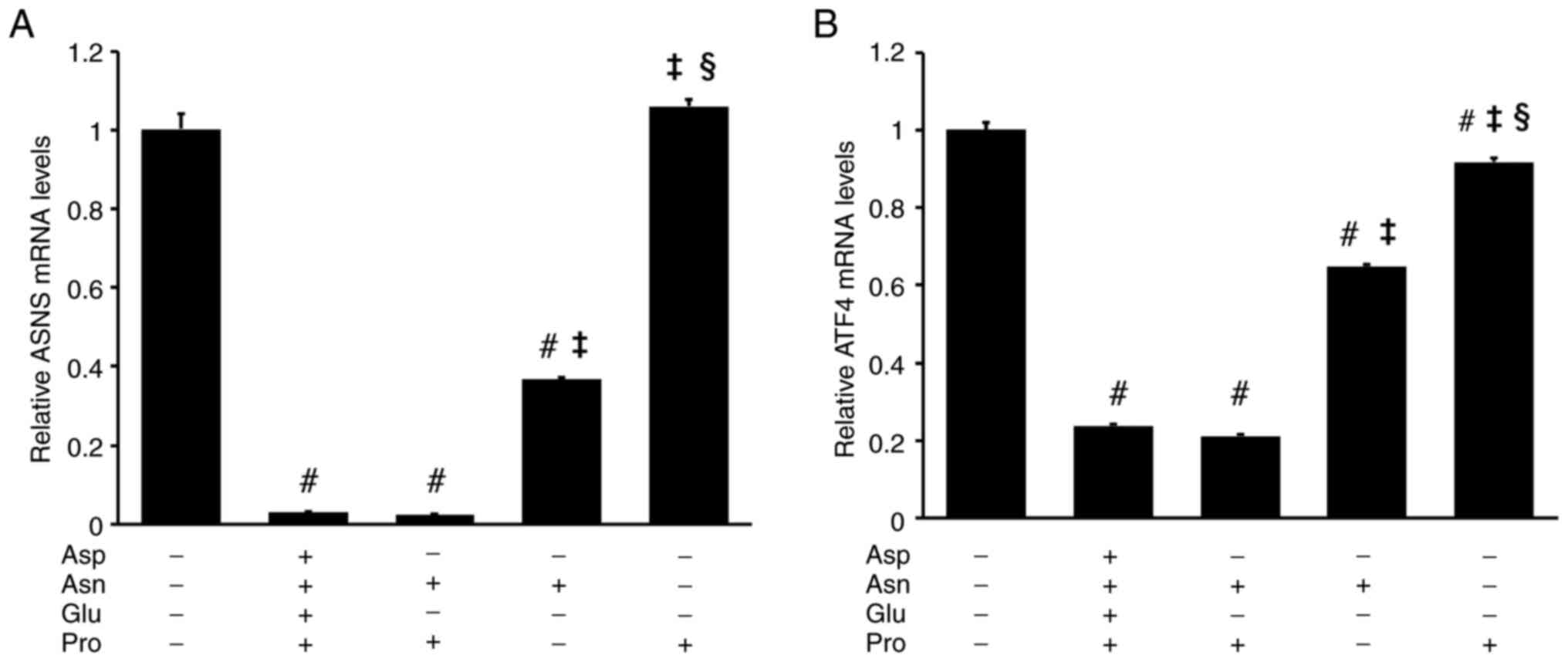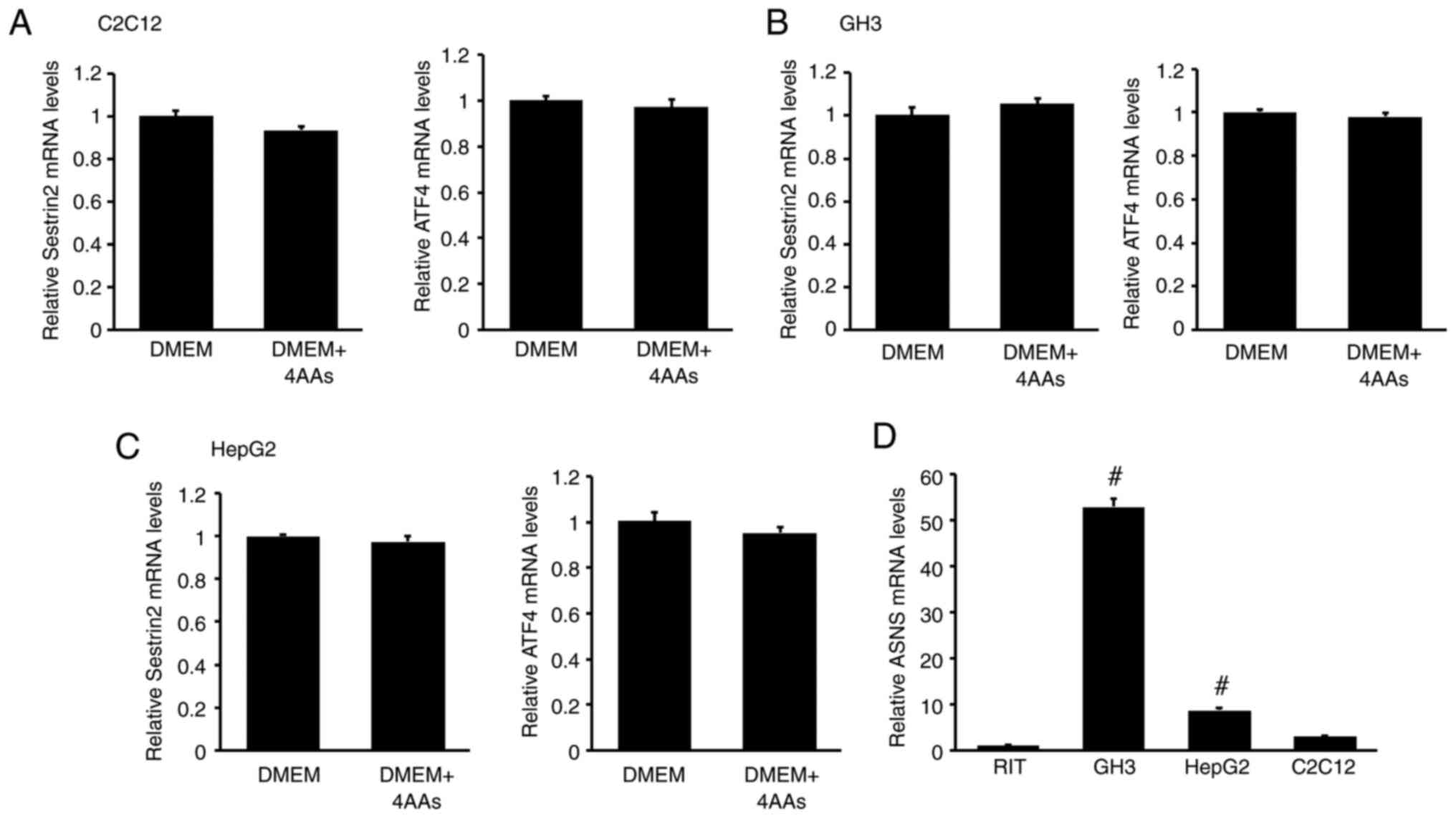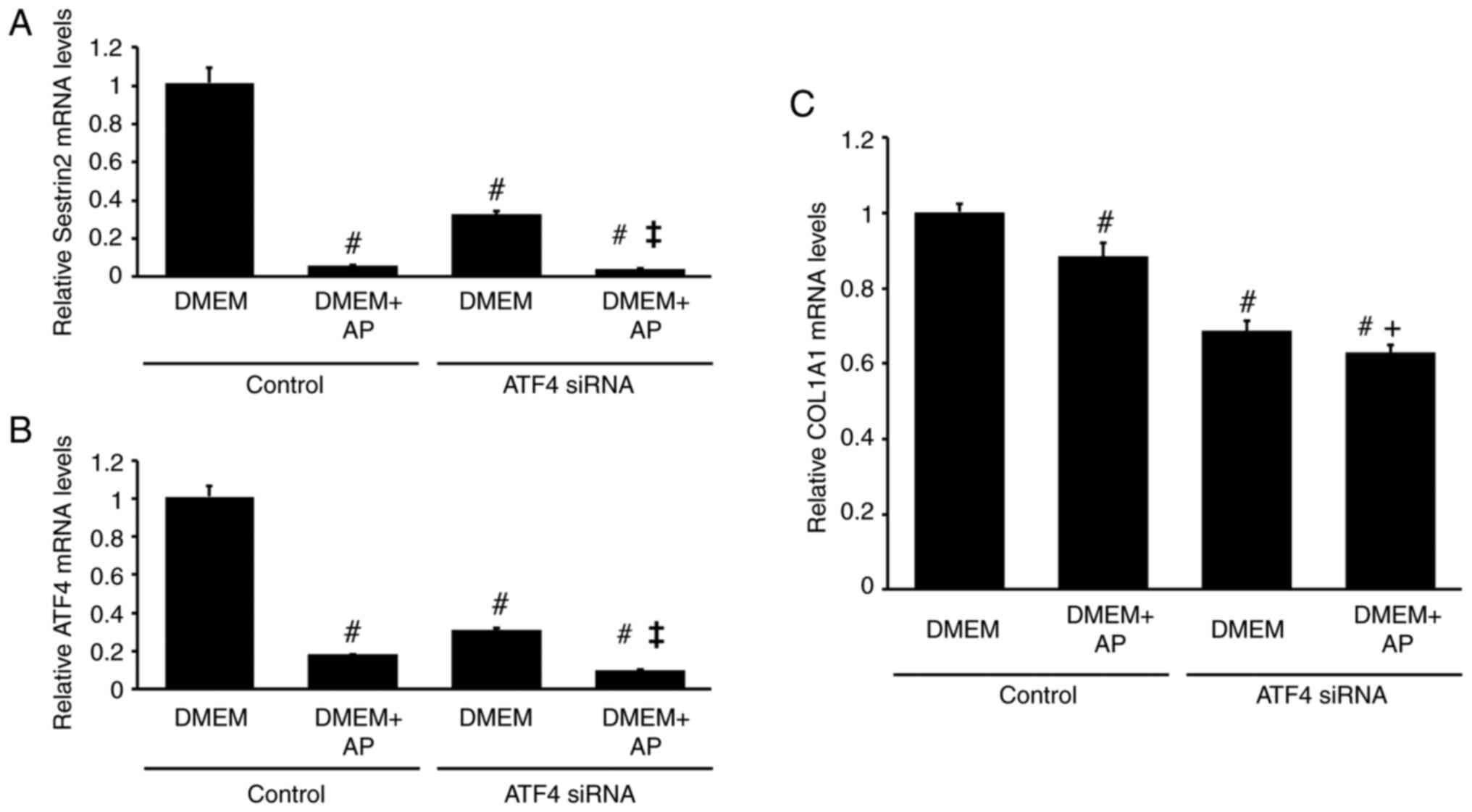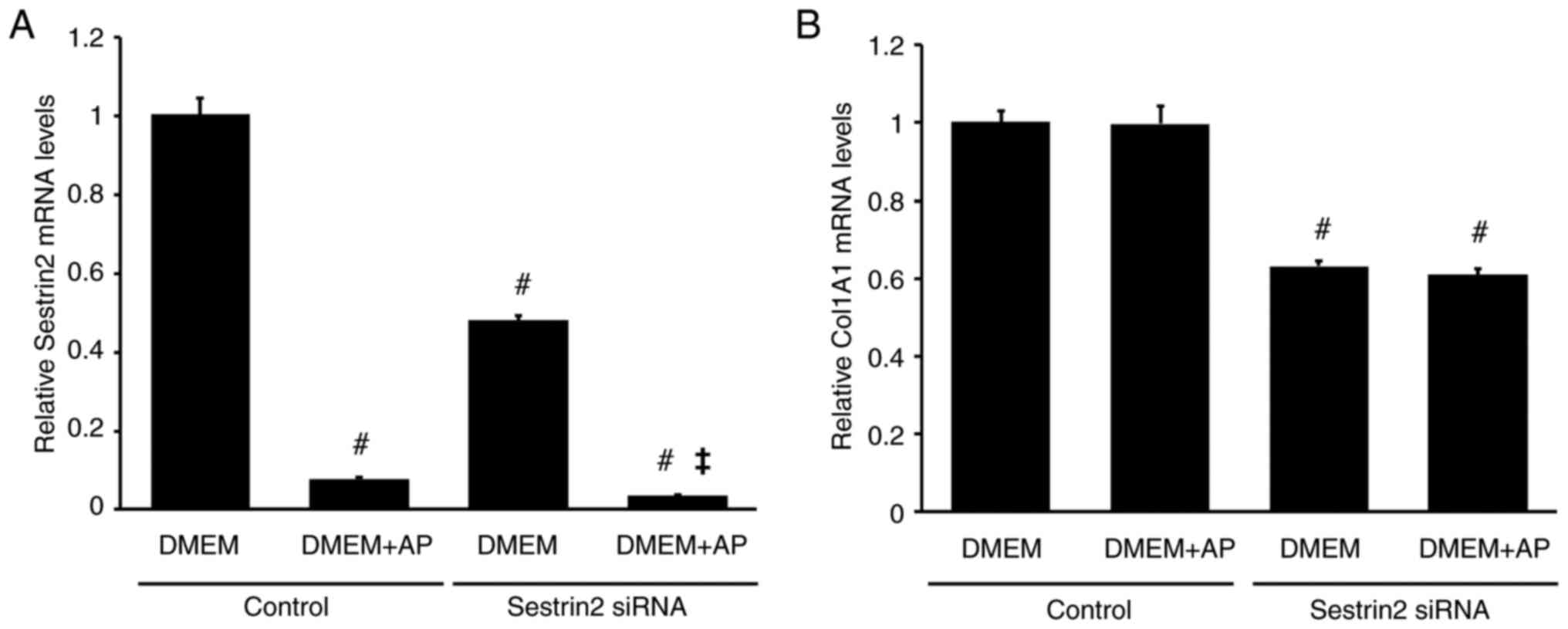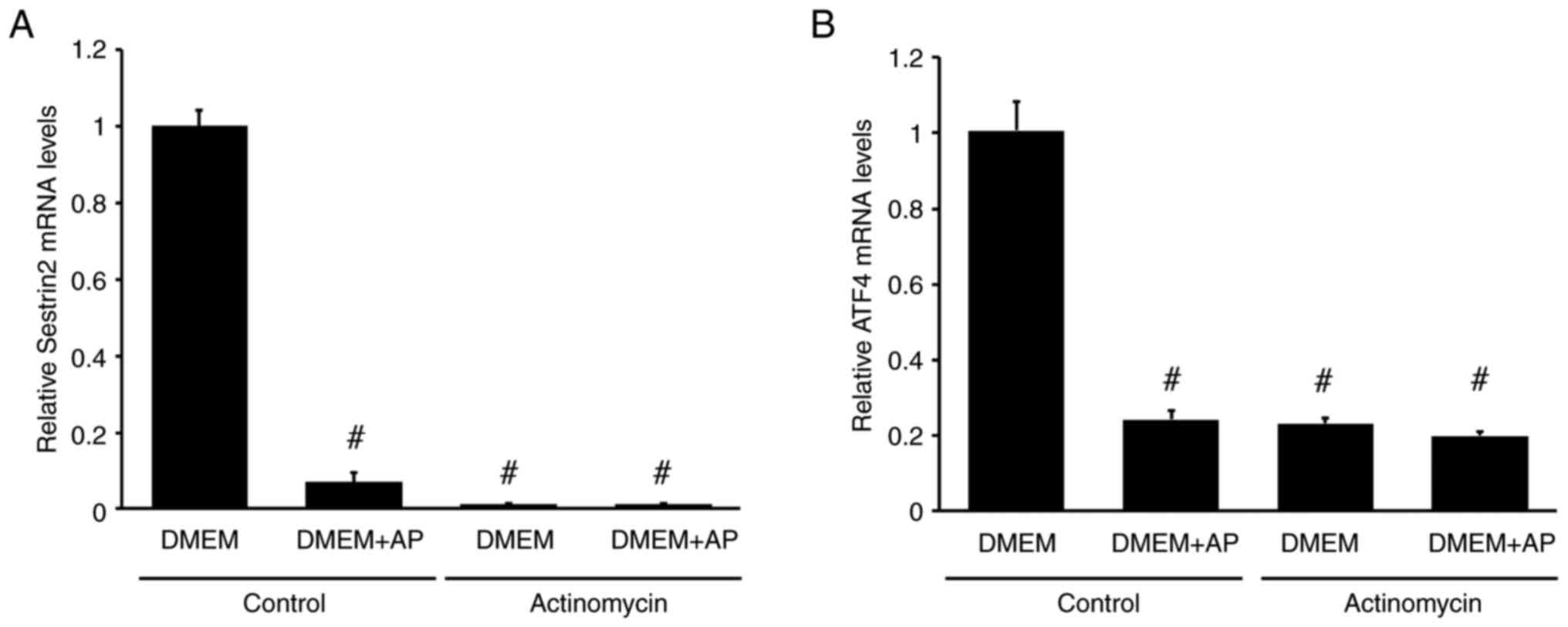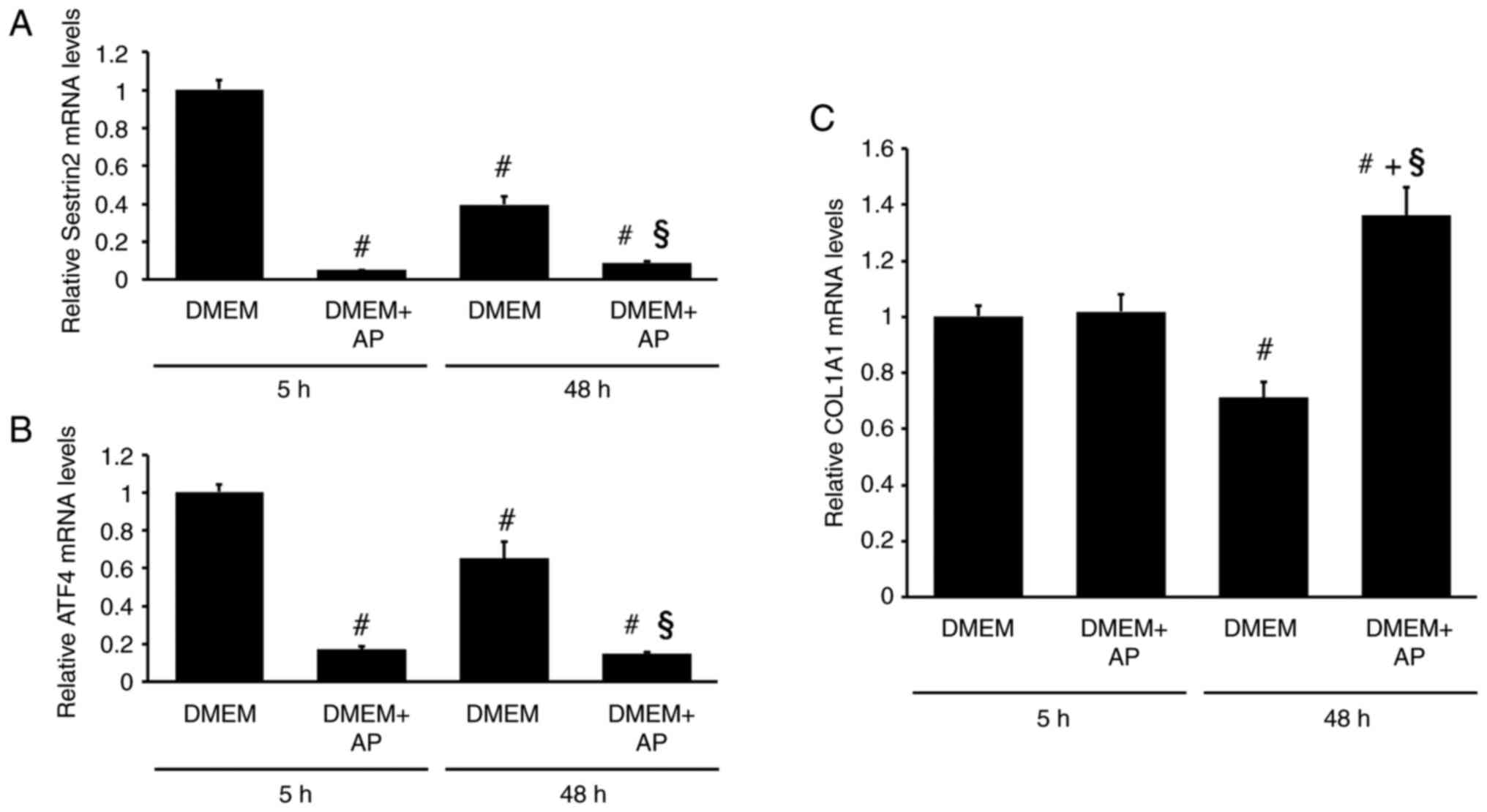|
1
|
Zamani M, Alizadeh-Tabari S, Ajmera V,
Singh S, Murad MH and Loomba R: Global prevalence of advanced liver
fibrosis and cirrhosis in the general population: A systematic
review and meta-analysis. Clin Gastroenterol Hepatol:
S1542-3565(24)00790-0, 2024 (Epub ahead of print).
|
|
2
|
Friedman SL: Hepatic stellate cells:
Protean, multifunctional, and enigmatic cells of the liver. Physiol
Rev. 88:125–172. 2008.PubMed/NCBI View Article : Google Scholar
|
|
3
|
Higashi T, Friedman SL and Hoshida Y:
Hepatic stellate cells as key target in liver fibrosis. Adv Drug
Deliv Rev. 121:27–42. 2017.PubMed/NCBI View Article : Google Scholar
|
|
4
|
Budanov AV and Karin M: p53 target genes
sestrin1 and sestrin2 connect genotoxic stress and mTOR signaling.
Cell. 134:451–460. 2008.PubMed/NCBI View Article : Google Scholar
|
|
5
|
Budanov AV, Shoshani T, Faerman A, Zelin
E, Kamer I, Kalinski H, Gorodin S, Fishman A, Chajut A, Einat P, et
al: Identification of a novel stress-responsive gene Hi95 involved
in regulation of cell viability. Oncogene. 21:6017–6031.
2002.PubMed/NCBI View Article : Google Scholar
|
|
6
|
Essler S, Dehne N and Brune B: Role of
sestrin2 in peroxide signaling in macrophages. FEBS Lett.
583:3531–3535. 2009.PubMed/NCBI View Article : Google Scholar
|
|
7
|
Seo K, Ki SH and Shin SM: Sestrin2-AMPK
activation protects mitochondrial function against glucose
deprivation-induced cytotoxicity. Cell Signal. 27:1533–1543.
2015.PubMed/NCBI View Article : Google Scholar
|
|
8
|
Rajanala SH, Ringquist R and Cryns VL:
Methionine restriction activates the integrated stress response in
triple-negative breast cancer cells by a GCN2- and PERK-independent
mechanism. Am J Cancer Res. 9:1766–1775. 2019.PubMed/NCBI
|
|
9
|
Sun W, Wang Y, Zheng Y and Quan N: The
emerging role of sestrin2 in cell metabolism, and cardiovascular
and age-related diseases. Aging Dis. 11:154–163. 2020.PubMed/NCBI View Article : Google Scholar
|
|
10
|
Kim HJ, Joe Y, Kim SK, Park SU, Park J,
Chen Y, Kim J, Ryu J, Cho GJ, Surh YJ, et al: Carbon monoxide
protects against hepatic steatosis in mice by inducing sestrin-2
via the PERK-eIF2α-ATF4 pathway. Free Radic Biol Med. 110:81–91.
2017.PubMed/NCBI View Article : Google Scholar
|
|
11
|
Yang JH, Kim KM, Cho SS, Shin SM, Ka SO,
Na CS, Park BH, Jegal KH, Kim JK, Ku SK, et al: Inhibitory effect
of sestrin 2 on hepatic stellate cell activation and liver
fibrosis. Antioxid Redox Signal. 31:243–259. 2019.PubMed/NCBI View Article : Google Scholar
|
|
12
|
Kuwahata M, Kubota H, Kanouchi H, Ito S,
Ogawa A, Kobayashi Y and Kido Y: Supplementation with
branched-chain amino acids attenuates hepatic apoptosis in rats
with chronic liver disease. Nutr Res. 32:522–529. 2012.PubMed/NCBI View Article : Google Scholar
|
|
13
|
Khedr NF and Khedr EG: Branched chain
amino acids supplementation modulates TGF-β1/Smad signaling pathway
and interleukins in CCl4-induced liver fibrosis. Fundam
Clin Pharmacol. 31:534–545. 2017.PubMed/NCBI View Article : Google Scholar
|
|
14
|
Cha JH, Bae SH, Kim HL, Park NR, Choi ES,
Jung ES, Choi JY and Yoon SK: Branched-chain amino acids ameliorate
fibrosis and suppress tumor growth in a rat model of hepatocellular
carcinoma with liver cirrhosis. PLoS One. 8(e77899)2013.PubMed/NCBI View Article : Google Scholar
|
|
15
|
Shrestha N, Chand L, Han MK, Lee SO, Kim
CY and Jeong YJ: Glutamine inhibits CCl4 induced liver fibrosis in
mice and TGF-β1 mediated epithelial-mesenchymal transition in mouse
hepatocytes. Food Chem Toxicol. 93:129–137. 2016.PubMed/NCBI View Article : Google Scholar
|
|
16
|
Lee HL, Lee J, Cha JH, Cho S, Sung PS, Hur
W, Yoon SK and Bae SH: Anti-fibrotic effects of branched-chain
amino acids on hepatic stellate cells. Korean J Intern Med.
37:53–62. 2022.PubMed/NCBI View Article : Google Scholar
|
|
17
|
Blackstock CD, Higashi Y, Sukhanov S, Shai
SY, Stefanovic B, Tabony AM, Yoshida T and Delafontaine P:
Insulin-like growth factor-1 increases synthesis of collagen type I
via induction of the mRNA-binding protein LARP6 expression and
binding to the 5' stem-loop of COL1a1 and COL1a2 mRNA. J Biol Chem.
289:7264–7274. 2014.PubMed/NCBI View Article : Google Scholar
|
|
18
|
Daou N, Viader A, Cokol M, Nitzel A,
Chakravarthy MV, Afeyan R, Tramontin T, Marukian S and Hamill MJ: A
novel, multitargeted endogenous metabolic modulator composition
impacts metabolism, inflammation, and fibrosis in nonalcoholic
steatohepatitis-relevant primary human cell models. Sci Rep.
11(11861)2021.PubMed/NCBI View Article : Google Scholar
|
|
19
|
Zou CG, Gao SY, Zhao YS, Li SD, Cao XZ,
Zhang Y and Zhang KQ: Homocysteine enhances cell proliferation in
hepatic myofibroblastic stellate cells. J Mol Med (Berl). 87:75–84.
2009.PubMed/NCBI View Article : Google Scholar
|
|
20
|
Pérez de Obanos MP, López-Zabalza MJ,
Arriazu E, Modol T, Prieto J, Herraiz MT and Iraburu MJ: Reactive
oxygen species (ROS) mediate the effects of leucine on translation
regulation and type I collagen production in hepatic stellate
cells. Biochim Biophys Acta. 1773:1681–1688. 2007.PubMed/NCBI View Article : Google Scholar
|
|
21
|
Sawa R, Ohnishi A, Ohno M, Nagata M, Wake
I and Okimura Y: Specific amino acids regulate sestrin2 mRNA and
protein levels in an ATF4-dependent manner in C2C12 myocytes.
Biochim Biophys Acta Gen Subj. 1866(130174)2022.PubMed/NCBI View Article : Google Scholar
|
|
22
|
Sekiguchi H, Hemmi N, Maki T, Ozawa A,
Kadowaki E, Kamiie J, Yamamoto M, Arishima K and Sakaue M: Culture
on a fragmin/protamine-coated plate suppresses the collagen type
IαI and TGF-β1 mRNA expression of rat hepatic stellate RI-T cells.
J Vet Med Sci. 75:553–559. 2013.PubMed/NCBI View Article : Google Scholar
|
|
23
|
Inami M, Fukushima A, Ueno T, Yamada T,
Tsunemi A, Matsumoto Y, Fukuda N, Soma M and Moriyama M: Reduction
of dimethylnitrosamine-induced liver fibrosis by the novel gene
regulator pi polyamide targeting transforming growth factor β1
gene. Biol Pharm Bull. 38:1836–1842. 2015.PubMed/NCBI View Article : Google Scholar
|
|
24
|
Théret N, Lehti K, Musso O and Clément B:
MMP2 activation by collagen I and concanavalin A in cultured human
hepatic stellate cells. Hepatology. 30:462–468. 1999.PubMed/NCBI View Article : Google Scholar
|
|
25
|
Herningtyas EH, Okimura Y, Handayaningsih
AE, Yamamoto D, Maki T, Iida K, Takahashi Y, Kaji H and Chihara K:
Branched-chain amino acids and arginine suppress MaFbx/atrogin-1
mRNA expression via mTOR pathway in C2C12 cell line. Biochim
Biophys Acta. 1780:1115–1120. 2008.PubMed/NCBI View Article : Google Scholar
|
|
26
|
Lu C, Jiang Y, Xu W and Bao X: Sestrin2:
Multifaceted functions, molecular basis, and its implications in
liver diseases. Cell Death Dis. 14(160)2023.PubMed/NCBI View Article : Google Scholar
|
|
27
|
Deng Y, Hu M, Huang S and Fu N: Molecular
mechanism and therapeutic significance of essential amino acids in
metabolically associated fatty liver disease. J Nutr Biochem.
126(109581)2024.PubMed/NCBI View Article : Google Scholar
|
|
28
|
Li H, Ning S, Ghandi M, Kryukov GV, Gopal
S, Deik A, Souza A, Pierce K, Keskula P, Hernandez D, et al: The
landscape of cancer cell line metabolism. Nat Med. 25:850–860.
2019.PubMed/NCBI View Article : Google Scholar
|
|
29
|
D'Aniello C, Fico A, Casalino L, Guardiola
O, Di Napoli G, Cermola F, De Cesare D, Tatè R, Cobellis G,
Patriarca EJ and Minchiotti G: A novel autoregulatory loop between
the Gcn2-Atf4 pathway and l-Proline metabolism controls stem cell
identity. Cell Death Differ. 22:1094–1105. 2015.PubMed/NCBI View Article : Google Scholar
|
|
30
|
Izaki S, Goto H and Yokota S: Increased
chemosensitivity and elevated reactive oxygen species are mediated
by glutathione reduction in glutamine deprived neuroblastoma cells.
J Cancer Res Clin Oncol. 134:761–768. 2008.PubMed/NCBI View Article : Google Scholar
|
|
31
|
Chisari AN, Sancho P, Caja L, Bertran E
and Fabregat I: Lack of amino acids in mouse hepatocytes in culture
induces the selection of preneoplastic cells. Cell Signal.
24:325–332. 2012.PubMed/NCBI View Article : Google Scholar
|
|
32
|
Hu YB, Ye XT, Zhou QQ and Fu RQ: Sestrin 2
attenuates rat hepatic stellate cell (HSC) activation and liver
fibrosis via an mTOR/AMPK-dependent mechanism. Cell Physiol
Biochem. 51:2111–2122. 2018.PubMed/NCBI View Article : Google Scholar
|



